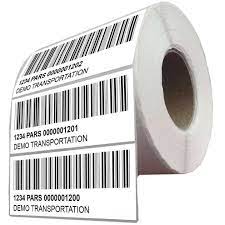PARS (CBSA Shipment Type)
| This article is part of the Shipment Release Types Guide |
PARS (Pre-arrival Review System) is a Canadian Shipment Type for goods to clear through CBSA and on an ACI eManifest. It is the default Shipment Type for commercial goods arriving in Canada by highway carrier. That is, any goods transported by a highway carrier must clear under a PARS unless they qualify for another Shipment Type or other exemption.

PARS was designed to speed up the release or referral for examination process when the goods arrive in Canada by allowing Customs to review the broker's entry electronically prior to arrival.
PARS depends on the use of PARS Numbers, a type of Cargo Control Number which the carrier designates for pre-arrival usage. Usually this is done by having PARS stickers printed in sequence in order to physically ensure that any given number cannot be reused by mistake. Like any Cargo Control Number, A PARS Number must not be reused for a period of at least 3 years. PARS Numbers are not required to have the word 'PARS' as part of the number, although it is fairly common practice to do so. A PARS Number must begin with the carrier's Carrier Code, and be followed by at least 4 characters (letters or numbers.)[1]
The PARS process begins when the carrier picks up a shipment. The carrier assigns a unique PARS Number to the shipment and advises the Customs Broker of the number being used, typically by affixing a PARS Sticker to the paperwork provided by the shipper, and faxing it to the broker. The broker then prepares an entry requesting release of the goods by CBSA, referencing the PARS Number provided by the carrier. The carrier prepares an ACI eManifest listing the same PARS Number for the shipment. Once CBSA accepts the broker's entry and the carrier's eManifest, the carrier can move the goods to the border. The PARS Number will serve as the common element between the broker's entry and the carrier's eManifest submission, so that the officer can tie them together and make the decision to release the goods or refer them for examination.
Declaring a PARS Shipment in ACI eManifest
PARS shipments are required to be declared on an ACI eManifest. To report a PARS shipment the carrier will need to create an ACI Shipment designated as non-CSA (or "PARS" if using BorderConnect's ACI eManifest software), and ensure that the shipment is transmitted as part of their ACI eManifest.
When entering a PARS shipment in ACI, the carrier should take special care to make sure that the PARS Number entered exactly matches the PARS Number provided to the Customs Broker, including the word 'PARS' if applicable. Failure to do so can result in delays at the border. [2]
In addition to being reported on the eManifest, each PARS declaration must be accompanied formal entry filed a Customs Broker. The carrier must ensure that the Customs Broker has cleared the PARS at least one hour prior to the driver's arrival at the border. This can be verified either by using an RNS system such as BorderConnect's PARS Checking software, or by checking directly with the broker.
| In order to comply with ACI eManifest requirements you are required to ensure that both your manifest and the broker clearance on any PARS shipments are on file with CBSA for at least one hour before the driver arrives at the border. |
References:
- ↑ CBSA - Other service options https://www.cbsa-asfc.gc.ca/services/carrier-transporteur/codes-labels-etiquette-eng.html
- ↑ CBSA Requirements for Commercial Clients https://www.cbsa-asfc.gc.ca/prog/manif/portal-portail/help-aide/ccncar-ncffret-eng.html#:~:text=The%20Cargo%20Control%20Number%20(CCN,equivalent%20release%20document(s).